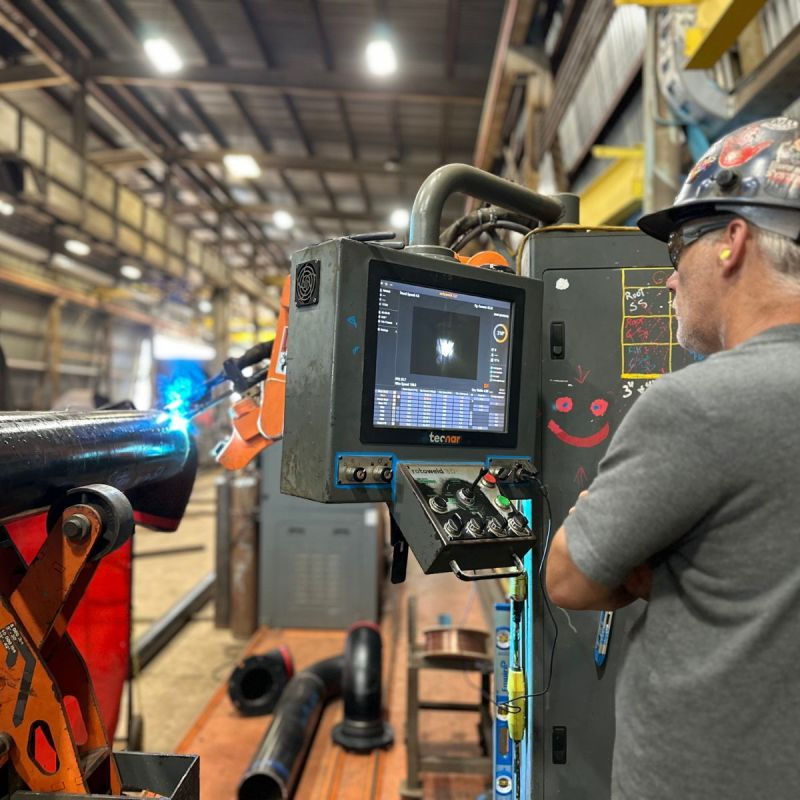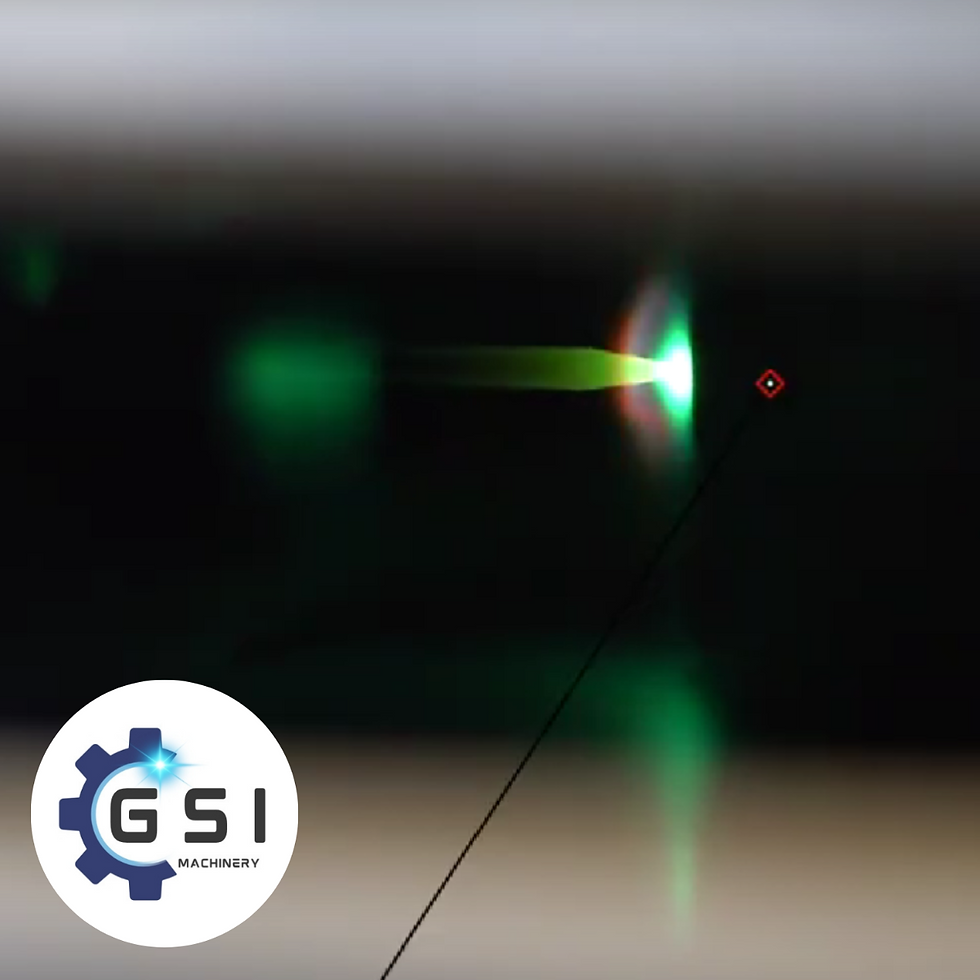How to Evaluate Automated Pipe Welding Machines
- George Ficken

- Sep 4
- 6 min read

If you've run a pipe fabrication shop or any fab shop for that matter you may have encountered difficulty finding and retaining skilled welders. It is all to common in today's labor market to struggle finding skilled welders and even when you do it can be challenging to retain them because they are in such high demand their job options are diamond dozen. Many shops are turning to automation to alleviate some of these challenges and gain some sort of consistency and reliability in their production. This article is to give you an idea of what to look for, what questions to ask and how to evaluate the automated pipe welding machines on the market today so that you can be sure you are making an informed decision. These are large investments for a business to make and a misstep here could be disastrous for your business so you really want to be careful and do you homework before investing in a new technology.
Automated, Mechanized or Semi-Automated

The term "automation" is very general and broad and often it is used to describe a machine that is mechanized or semi-automated and not truly a fully automated, autonomous welding machine. The simplest way to understand this is to ask "how does this machine make welding parameter and motion adjustments in real time?" The answer to this question will be one of three things 1. the machine drives the torch and makes welding parameter adjustments on the fly with no operator input needed to ensure a perfect weld each time 2. the operator needs to be trained what to look for during the weld and be skilled enough to toggle a joystick and or touchscreen controls in order to make adjustments on the fly 3. the machine has no on the fly adjustment capabilities, the operator needs to make a weld, inspect the weld, make an adjustment and make another weld in order to make adjustments to the weld parameters and or motions.
1. The machine makes all the adjustments in real time with no operator input needed: This means that the machine in question MUST have machine learning Ai software in order to have this capability. This means that the machine can view the weld puddle, arc and fitup and make decisions in real time based on what it sees and measures to adjust for things like travel speed, wire speed, amperage, torch height, oscillation width, oscillation speed, oscillation dwell time and torch position. This means that the operator is not responsible for making needed weld adjustments which will be necessary in a real-world environment to account for imperfect fit-ups with varying high-low, bevel angles and open root gaps. This is the technology that the Rotoweld machine employs - a proprietary, in-house designed Ai software with machine learning that is able to analyze the weld puddle, arc, open root gap, bevel angle, tack welds and high-low variation and make its own adjustments in real time on the fly with no operator input to ensure a perfect weld is produced even when presented with imperfect fit-ups.
2. The operator makes all the adjustments in real time with some sort of joystick and or touchscreen controls. This means that the operator is the driver and must constantly monitor the weld to be ready at any moment to make an adjustment. The operator is responsible for analyzing the weld puddle and fit-up and adjusting the amperage, travel speed, torch height (sometimes done with AVC), wire feed rate, oscillation width, oscillation dwell, oscillation speed and torch position to ensure good penetration on every weld. Often times operators with varying skill levels miss opportunities to make needed adjustments because they are not attentive enough or not fast enough to make the adjustments before the problem presents itself. We find that this level of automation, while somewhat faster than hand welding, often becomes non-productive because the average operator struggles to make the needed adjustments weld after weld day in and day out. Rework is an absolute killer of production in pip fabrication and will quickly eliminate any gains you made on welding cycle times.
3. The system requires manual programming where you make a weld, inspect it, make an adjustment to the program and weld another to see the result of the adjustment. These systems are program-based and require a high level of programming on the font-end. They are at a severe disadvantage because the program cannot be adjusted in real time on the fly, which means that the pipe beveling and fit-up must be extremely accurate. We find that it is difficult to make such accurate fit-ups so that the same exact weld program will work repeatedly day in and day out. Typically by the time you are able to make such accurate fit-ups you lose any gains you made in weld cycle times versus hand welding.
Who Makes and Supports the Software and are There Annual Fees?
Many OEM's are builders and not also software companies and so they often will use a 3rd party software provider. Even if the software is good, this can pose serious challenges for you now and especially in the future. Software companies are just that, so they make profits by developing and charging for software typically on an annual subscription base. As you may notice with your Netflix account, software subscriptions tend to go up year over year, not down. So you need to consider the cost of ownership of the machine which includes future costs to keep your software license and any updates that will be needed. Typically 3rd party software providers charge annual fees and charge for updates which they tend to do regularly.
The Rotoweld machine is manufactured by Tecnar, who employs their own team of in-house software engineers who have built and continuously support their software. The software is not charged for on a subscription bases, you buy it and you own it for the life of the machine and it is supported by Tecnar for the life of the machine. This means that even if new software comes out yours will not be obsolete because Tecnar is the original software engineer they can always contonue to support a previous version.
Who Builds the Machine Components?

Lastly, you always want to consider build quality and after sale support. This can be addressed by asking who builds the components of this machine? Is the machine truly manufactured in-house by the OEM or are they assembling globally sourced parts? This is a major distinction and one that sets Rotoweld apart from many competitors. The Rotoweld is built 100% in-house with some common electrical parts sourced from abroad. This means that all the hardware of this machine, including the robotic arm are built 100% in house. Which in tern means you will not be stuck waiting weeks or even months for parts coming from overseas.

It also means that this machine's components are made for automated welding specifically. It uses servo motor driven, direct drive postioners to provide precise speed control and high torque at any speed. It also utilizes a true robotic welding arm which is made in house to provide smooth, fast, accurate welding motions and angles the torch at the proper 45 degree angle on the root pass to provide the best penetration and allow faster welding speeds. Many machines outsource postioners to a positioner company that they are then reliant on for parts and most of these postioners use spur gears which develop play and are not idea for automated welding long-term where precise, smooth motions are needed. They also tend to use a column and boom torch holder which allows only for rudimentary welding motions and a 90 degree torch angle, slowing the welding speed down and negatively effecting penetration.

There are many things to consider when evaluating automated pipe welding systems and this article is but a start but we wanted to give you a starting point with some key questions and considerations. We strongly encourage our customers to do their homework, go see machines in person, evaluate the build quality, technology and support behind the machines and make the best decision you can for your shops needs and goals. We are here to help you make an informed decision and we are available at our shop in Houston for live demonstrations of the Rotoweld. We invite you to come see the technology for yourself, the build quality of this machine and get hands on with the machine so you can see for yourself the capabilities it offers.










